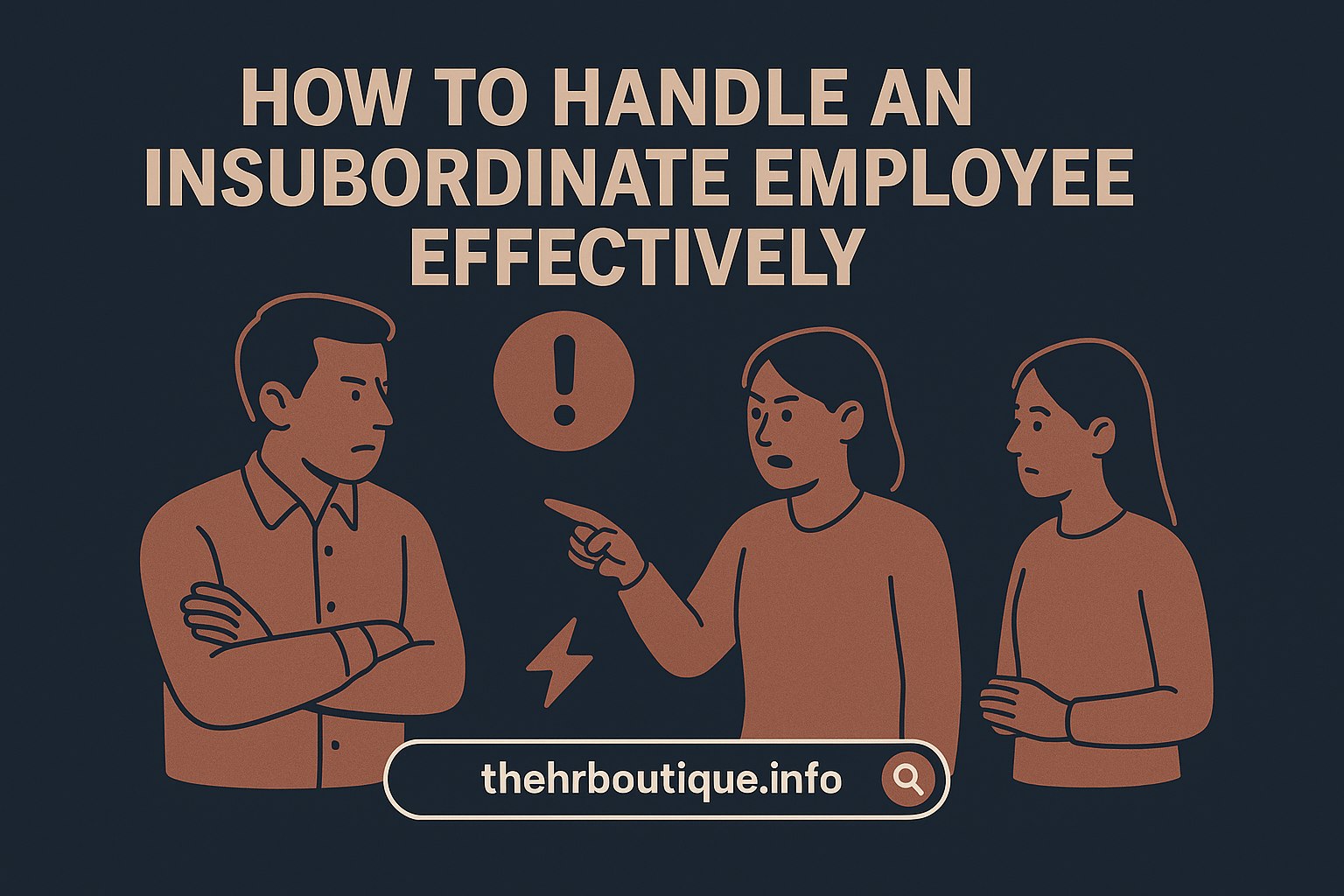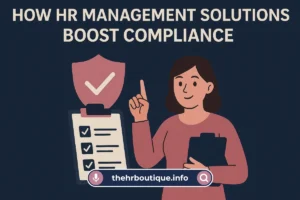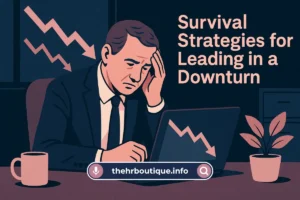You set a plan in motion, and a team member rejects it openly, in front of everyone. The energy in the room shifts. Respect things. Authority wobbles.
That’s not frustration. That’s insubordination. And it demands your attention fast.
Insubordination is a deliberate refusal to follow a direct instruction or a public defiance of rules. When it happens, leadership can’t afford hesitation. Your team is watching. Your response defines what’s acceptable and what’s not.
This guide walks you through handling an insubordinate employee with clarity and purpose. You’ll get to know how to spot it early, address it calmly, and lead your team through the disruption without losing control. The goal isn’t just discipline, it’s stability, trust, and respect.
The more clearly you handle conflict, the more confidently your team can move forward. Let’s get into the steps that keep your workplace aligned, even when someone tries to push it off track.
Why Does Insubordination Happen?
Insubordination doesn’t always come from a bad place but it always needs to be addressed. Sometimes it begins with unclear communication. If goals shift, roles get murky, or team direction gets foggy, people push back.
Other times, it’s personal stress spilling into work. It can even stem from inconsistency when rules get broken without consequences, boundaries blur.
Maybe past feedback was vague or absent. Maybe a recent conflict never got resolved. Often, insubordination signals a deeper issue that’s been simmering under the surface.
If you stop at reacting to the outburst, you miss the chance to fix what’s fueling it. Look for root causes. Ask what’s changed. That proactive lens doesn’t excuse the behavior but it gives you a shot at real resolution.
And it lets you shape a culture where respect isn’t just expected, it’s built into the way people work together.
Set Clear Rules and Expectations for Insubordinate Employee
A team without clear expectations is a team primed for problems. Preventing insubordination starts by defining what’s acceptable and what’s not. People can’t meet expectations they don’t know exist.
Use tools such as onboarding guides, handbooks, and kickoff meetings to set the standard. Outline not just the tasks. But behavior as well. Things like how people communicate, respond, and show up for the team.
Revisit the rules when priorities shift. Share real examples to make them practical.
Then, if someone crosses the line, your response isn’t personal, it’s policy. Set clear rules give people structure. They help employees feel confident asking questions and navigating decisions.
And when expectations stay consistent, accountability feels fair. That consistency supports respect. It builds momentum. And it makes sure everyone’s playing by the same rules.
Prevent Insubordination Early
Most problems start small and stay small if you catch them early. Building a respectful team culture means staying close to your people.
Schedule check-ins. Make space for feedback.
When someone rolls their eyes in a meeting, skips a call, or ghosts an email that’s your cue. Those aren’t harmless habits. They’re warnings. And they don’t go away on their own.
Address them in private. Stay direct. Don’t wait for it to explode in public. The earlier the conversation, the easier the fix.
Your response sets the tone. Stay calm, consistent, and clear. That example invites others to do the same. It builds trust. It shows your team that issues don’t get ignored, they get handled.
And it keeps resentment and disrespect from gaining ground.
How to React to an Insubordinate Employee
When insubordination shows up, stay composed. Write down what happened. Stick to the facts, what was said, where it happened, who witnessed it. This record matters. It grounds your response in truth, not emotion. It also provides essential documentation if the situation requires an HR counseling service.
Next. Meet privately with the employee. Start with what you observed. And say how it broke the company rules. Try to keep the conversation about the behavior and the impact.
Give them space to share their perspective, but don’t let it turn into an argument. You’re not here to win, you’re here to lead.
Show that respect and teamwork are non-negotiable. Your reaction becomes a model for how your team handles friction. And it proves that when someone steps out of bounds, there’s a clear, fair process to bring them back in.
Create a Plan for Change
After the talk, lay down a path forward. Don’t just say “fix it.” Say what success looks like. Be specific:
- Respond to emails on time
- Speak professionally in meetings
- Hit deadlines without reminders
Vague advice like “be more respectful” won’t help anyone.
Offer tools if needed, maybe it’s a mentor, a short training, or more regular check-ins. You’re not just calling out problems. You’re giving them a way to grow.
Schedule follow-ups. Acknowledge the small wins. If the behavior shifts. Reinforce it. If it slips, update the plan and explain why.
And try to focus on correction and not punishing. That shows the team you value improvement over blame. And it gives the employee a real chance to reset their role, rebuild trust, and move forward.
Use Discipline When Needed
If the behavior doesn’t shift after feedback and a clear plan, it’s time to use formal discipline. Start with a verbal warning. Spell out why it matters. Make sure they understand this isn’t just a note, it’s a signal.
If there’s no improvement, document the next step with a written warning. Record the behavior. Record your response.
In serious cases, HR intervention, suspension, or even termination may follow. But stay grounded in your company’s process. Never discipline in public. Never act in anger.
Consistency is important here too. Not just for the individual but for the entire team in the company. When everyone sees rules applied evenly, trust grows. Morale holds.G
People know they won’t be blindsided or treated unfairly. Discipline isn’t about punishment, it’s about protecting standards. And that protects your whole team.
Help Managers Grow
Insubordination doesn’t just test your policies, it tests you. Handling it well takes skill. That means investing in yourself.
Explore training in conflict resolution, feedback, and tough conversations. Join leadership forums. Tap into mentors. Practice. Reflect. Ask questions. Learn how others navigate the same challenges.
Every time you sharpen your skills, you build smart leadership muscle. That makes you calmer under pressure. Clearer in communication. More confident in the hard moments.
And as you grow, your team feels that difference. They trust you. They follow you. And they reflect the tone you set.
Good leaders don’t just manage, they develop. Start with yourself.
How to Handle Insubordinate Employee
Insubordination is a threat but your response is the opportunity. It’s a moment to define the line, model composure, and reinforce your team’s values. Handle it early. Be clear. Stay fair.
Respect won’t return by chance; it returns through structure, follow-through, and consistency. Don’t ignore the signals. Don’t let small things snowball. Step in when it matters.
Your leadership will shape how the team responds. Protect the team culture you’ve worked hard to build and keep leading with strength and clarity.





